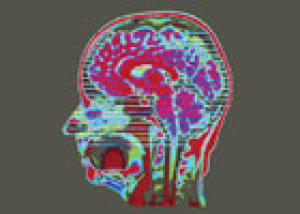Functional magnetic resonance imaging is growing from showy adolescence into a workhorse of brain imaging
April 10, 2012 | Source: Nature News

An MRI of the human head (credit: Wellcome Images)
Neuroscientists are seeking ways to improve the spatial and temporal resolution of brain signals so they can build more detailed models of the brain’s organization, networks and function.
New functional magnetic resonance imaging (fMRI) methods include sophisticated statistical techniques to pick out detailed patterns from fMRI scans, use of stronger magnets, and injecting molecules that are easier to detect than oxygenated blood, in a method more akin to PET.
Los Alamos National Laboratory is developing a related technique that uses ultrasensitive magnetometers called SQUIDs (superconducting quantum interference devices) to pick up signals close to the levels neurons can produce.